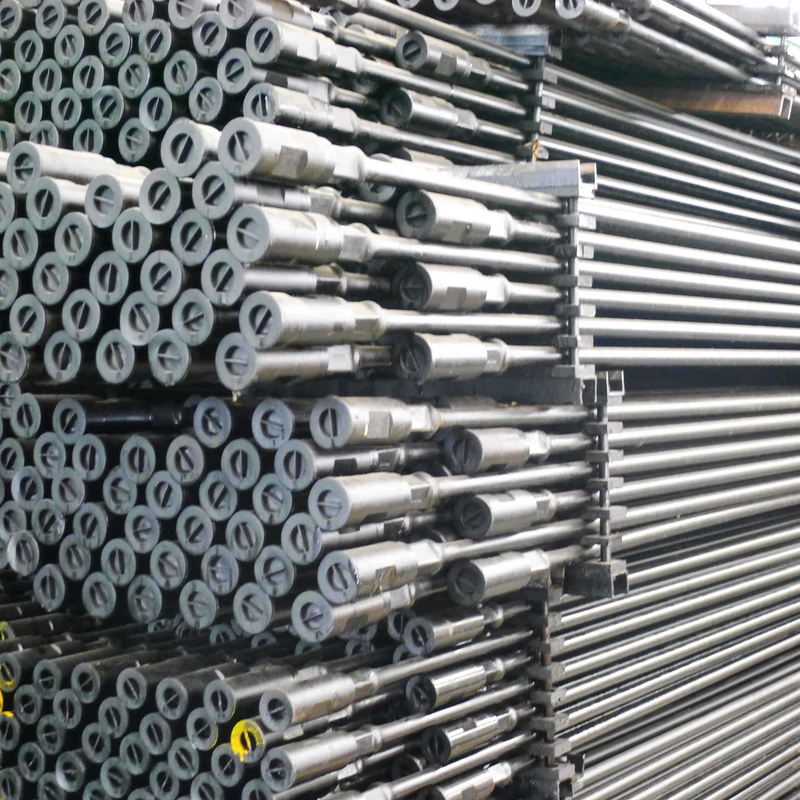Polished Rod
1. Definition & Purpose
A Polished Rod is the uppermost component of a sucker rod string in a beam pumping system. It connects the surface horsehead (of the pumping unit) to the downhole rod string and pump, while maintaining a dynamic seal at the wellhead.
2. Key Features & Functions
| Feature | Purpose |
|---|---|
| Precision-Polished Surface | Ensures a gas/liquid-tight seal with the stuffing box |
| High-Strength Material | Withstands cyclic tensile loads (up to 50,000+ lbf) |
| Chrome-Plated or Stainless Steel | Resists wear/corrosion from well fluids |
| Standardized Threads | Connects to carrier bar and sucker rod string |
3. Technical Specifications
Standards: API Spec 11B (for dimensions/threads)
Diameter: ¾" to 1½" (common sizes: 1", 1⅛", 1¼")
Length: Typically 12 ft to 25 ft (longer reduces frequency of adjustments)
Materials:
Carbon Steel (chrome-plated for wear resistance)
Stainless Steel (for corrosive wells)
Alloy Steel (high-load applications)
4. Critical Design Elements
Polished Finish: Mirror-smooth surface (Ra <16 µin) to prevent packing wear
Straightness Tolerance: <0.001 in/ft to avoid stuffing box leaks
Thread Types:
Upper End: API 1½" or 1¾" Pin (connects to carrier bar)
Lower End: API Box (connects to sucker rod)
5. Common Failure Modes & Solutions
| Issue | Cause | Prevention |
|---|---|---|
| Excessive Wear | Sand/abrasives in well fluid | Install sand shields or rotating polish rod protectors |
| Corrosion Pitting | H₂S/CO₂ exposure | Use stainless steel or chrome-plated rods |
| Thread Fatigue | Improper torque or misalignment | Follow API RP 11BR for makeup torque |
| Bending/Fracture | Misaligned pumping unit | Check wellhead alignment quarterly |
